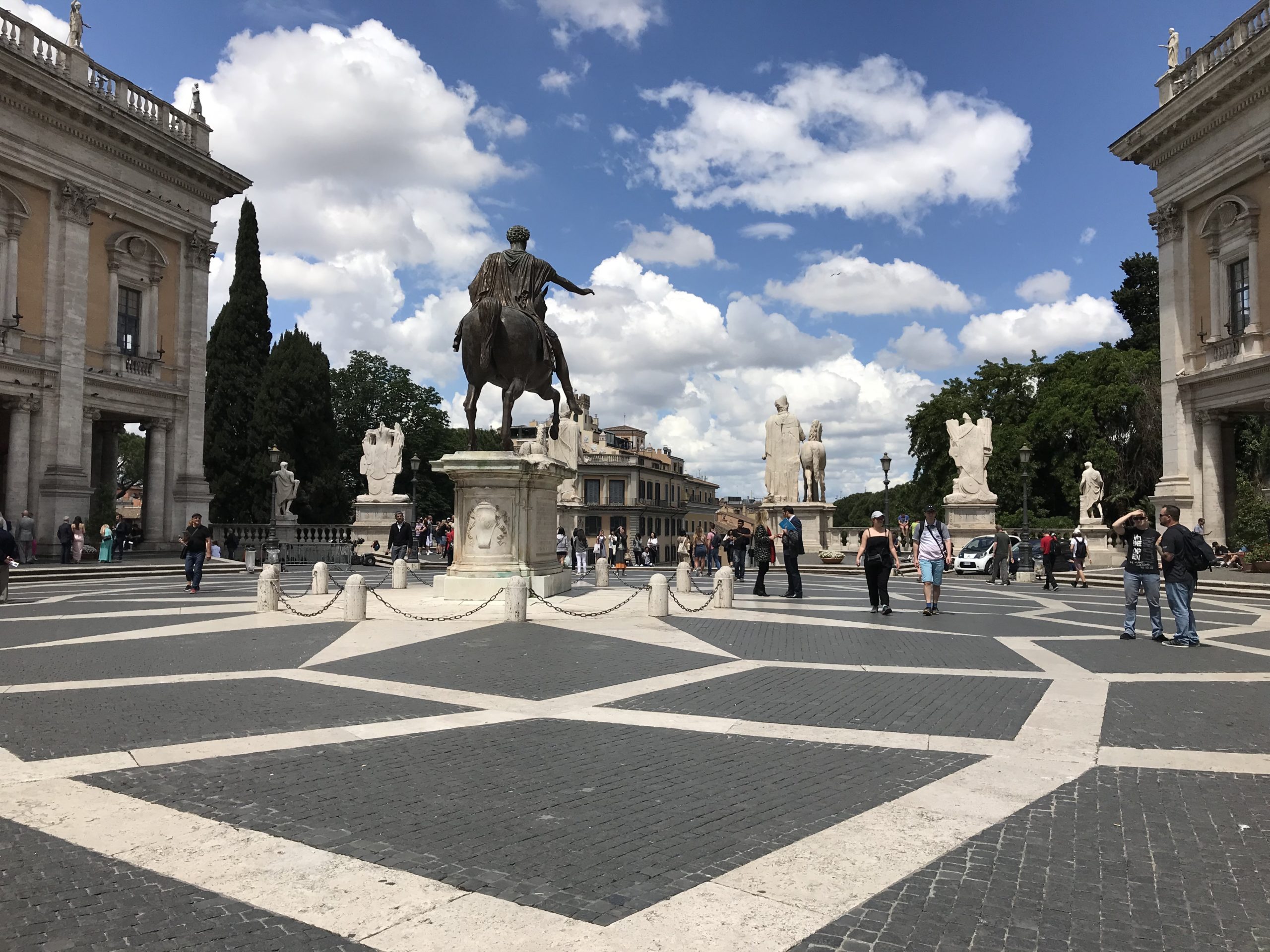Start with our video overview:
Understanding the geology of Rome is fundamental to comprehending the city. The famous Seven Hills of Rome exist in relation to the group of volcanoes that form the Alban hills, about 30 kilometers south of Rome. The volcanoes are now extinct but were active nearly half a million years ago. They expelled huge amounts of ash and debris into the air, which was deposited on the planes around the Tiber River, creating the hills.
Once volcanic ash settles and compacts, it becomes rock, known as tuff. Forming the base of the hills, tuff was a fundamental construction material for the ancient Romans and is found in many ancient ruins throughout the city. Tuff was used to make ashlar blocks used in construction and was a component of cement. Its relatively soft and porous nature allowed for the excavation of underground catacombs.
Over the centuries, the Tiber carved out the valleys at the foot of the hills, altering the landscape of Rome. Throughout antiquity, the Roman population had an intrinsic relationship with the river as it affected the daily life of the city for better and worse. Due to the ever-present risk of floods, in the 19th century huge flood walls were built around the banks of the river, compressing and isolating it from the rest of the city.
In comparison with ancient Rome, the geological features look quite different nowadays. The city is flatter, the hills are not as high as before and the valleys have been filled up. After different events of mass destruction (like floods or fires), the damaged area was buried and rebuilt on top, altering the ground level of the city. For this reason, it is currently difficult to distinguish between the hills and the valleys when taking a walk around the city.
This explains why Rome has so many geological and architectural layers visible in sites of former and present excavations, especially in the historic center. Certainly, the best-known excavation sites are the Roman Forum and Palatine hill, which were the administrative center of ancient Rome and the imperial residential area, respectively. Excavations in these areas began around the second half of the 19th century and remain popular sites of archeological investigation.
Bibliography
- “The subsurface geology of Rome: Sedimentary processes, sea-level changes and astronomical forcing” by Fabrizio Marra – https://www.sciencedirect.com/science/article/abs/pii/S0012825214000762
- “Recent Excavations in Rome” by Orazio Marucchi – https://www.journals.uchicago.edu/doi/10.2307/495863
- “‘Palatium’. Living on the Palatine from the Foundation of Rome to the Modern Age” by Francesca Boldrighini, Giulia Giovanetti, Michela di Meola – https://parcocolosseo.it/en/itineraries/palatium-living-on-the-palatine-from-the-foundation-of-rome-to-the-modern-age/
- “Tuff” by Britannica, T. Editors of Encyclopaedia – https://www.britannica.com/science/tuff
This content is brought to you by The American Institute for Roman Culture, a 501(C)3 US Non-Profit Organization.
Please support our mission to aid learning and understanding of ancient Rome through free-to-access content by donating today.
Cite This Page
Cite this page as: Darius Arya, The American Institute for Roman Culture, “Geology of Ancient Rome” Ancient Rome Live. Last modified 11/16/2019. https://ancientromelive.org/geology-of-rome/
License
Created by The American Institute of Roman Culture, published on 10/24/2019 under the following license: Creative Commons: Attribution-NonCommercial-ShareAlike. This license lets others remix, tweak, and build upon this content non-commercially, as long as they credit the author and license their new creations under the identical terms. Please note that content linked from this page may have different licensing terms.



